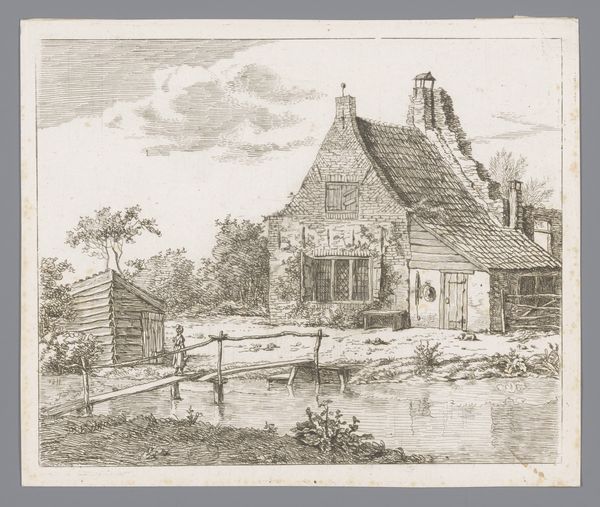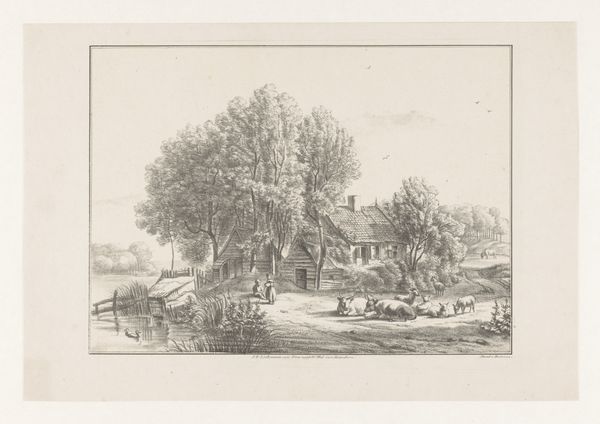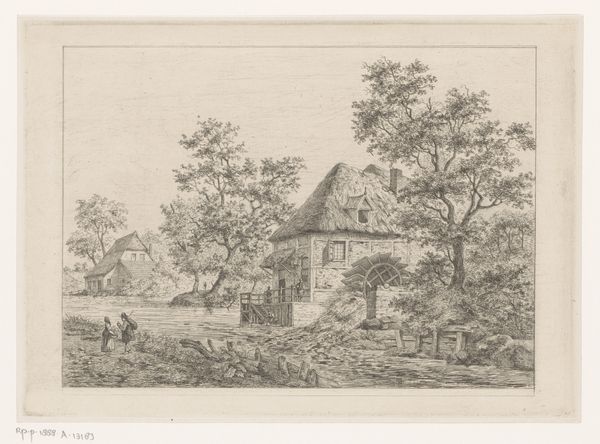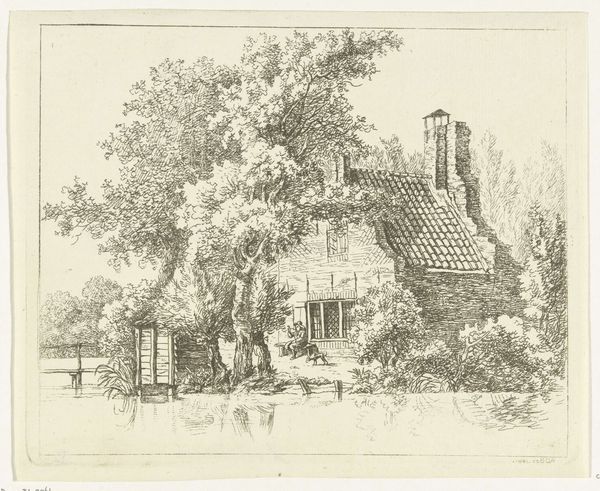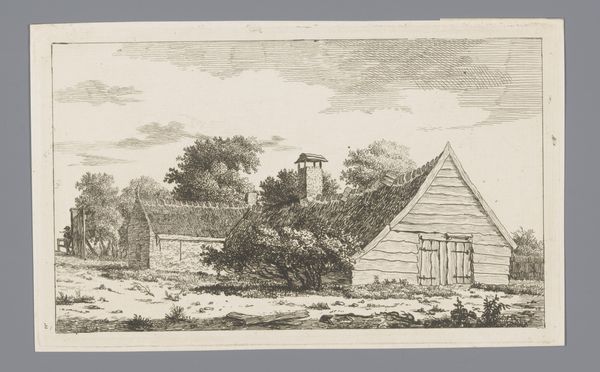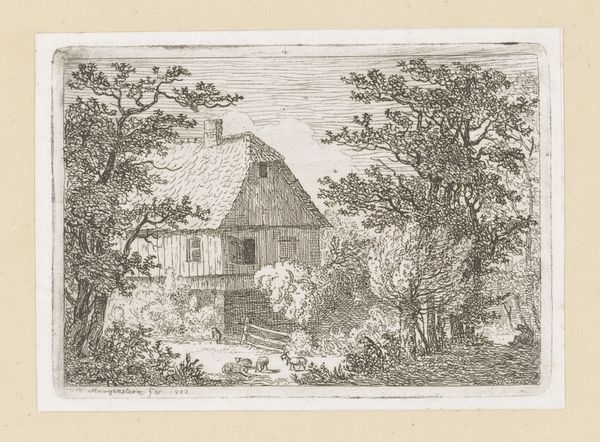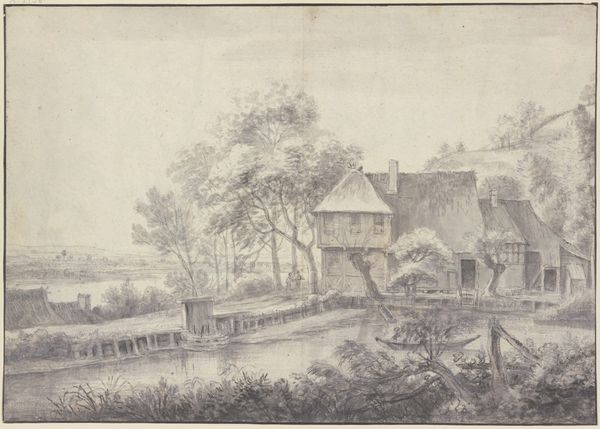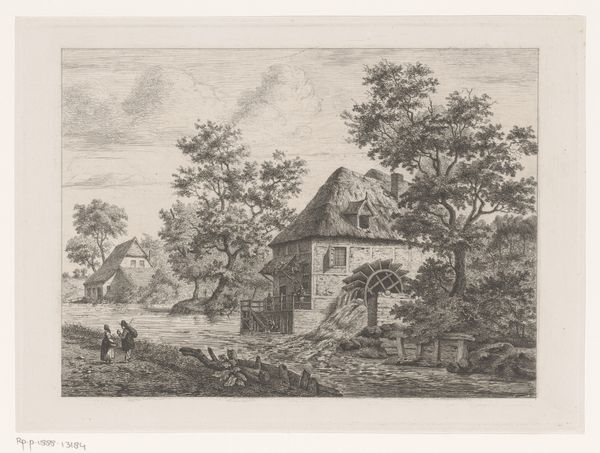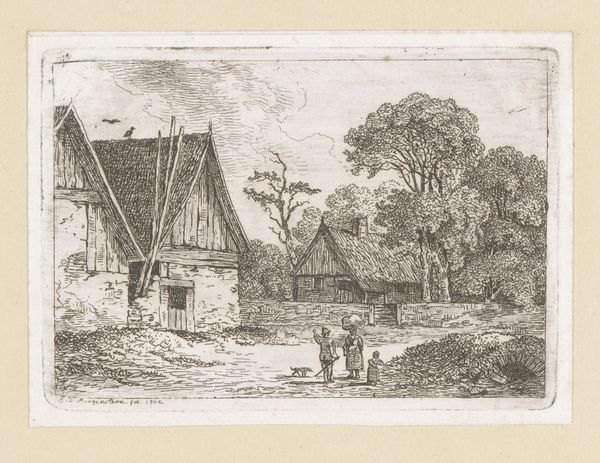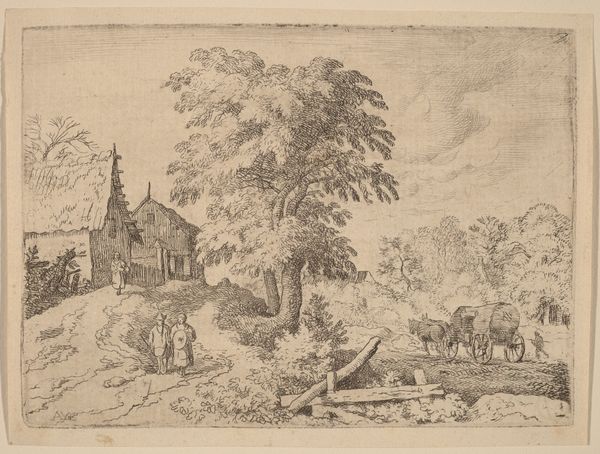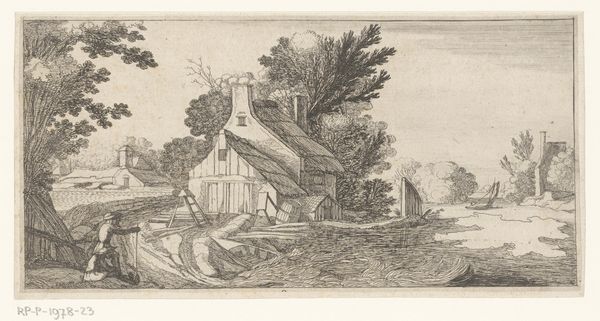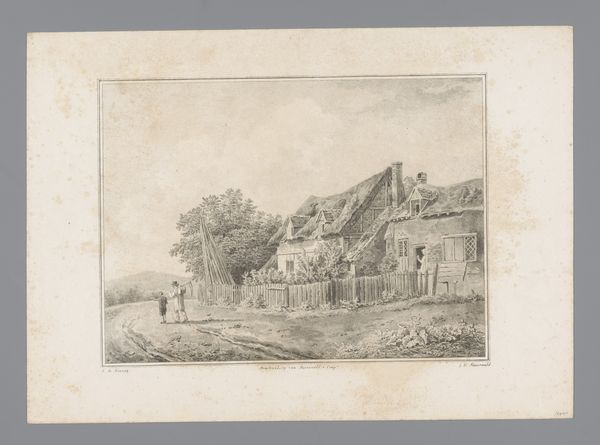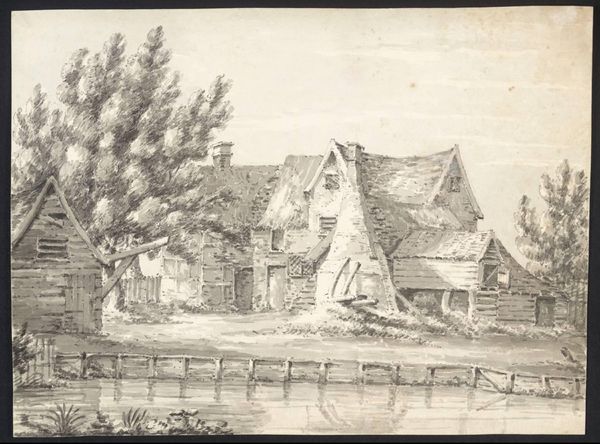
Rokende man op een bankje voor de ruïne van het Huis Snaatburg te Maarssen 1801
0:00
0:00
anthonievandenbos
Rijksmuseum
drawing, print, etching, engraving
#
drawing
# print
#
etching
#
landscape
#
house
#
romanticism
#
engraving
Dimensions: height 175 mm, width 208 mm
Copyright: Rijks Museum: Open Domain
Curator: This is Anthonie van den Bos's 1801 print, “Rokende man op een bankje voor de ruïne van het Huis Snaatburg te Maarssen”, housed right here at the Rijksmuseum. The technique appears to be etching or engraving, with its dense network of lines creating this delicate scene. Editor: It’s incredibly tranquil. The precision of the lines renders a scene steeped in melancholy; the stillness of the water, the dilapidated building, even the posture of the figures suggests a pensive mood. The work balances this detailed depiction with romantic undertones of transience. Curator: Absolutely. Van den Bos composed this view amidst the burgeoning Dutch Romantic movement, finding pictorial interest in old ruins, like those of the Snaatburg House in Maarssen. These types of structures, worn down over time, became emblems of historical narrative, commenting on society’s evolution and lost pasts. Editor: Tell me more about that ruin. I’m drawn to how Van den Bos contrasts the sharply rendered architectural details of the building—despite its disrepair—against the looser, more organic lines of the surrounding nature. This creates a kind of tension between man’s construct and nature's inevitable reclamation. Curator: Snaatburg House had a long and storied existence; it slowly fell into neglect and disrepair towards the end of the eighteenth century, embodying Romanticism’s fascination with ruins as poignant reminders of time's passage. Its depiction allows a social commentary about the changing tides of Dutch society. Editor: I see that commentary echoed in the seemingly idle man in the foreground. He is smoking by the ruin, almost unaware of his own relation to time or the changes surrounding him. Note that van den Bos cleverly integrates small yet legible textural variety—smooth surfaces contrasted with rough stonework—generating further representational and conceptual interest. Curator: Precisely. He seems caught between observing it and being indifferent to its fate. What begins as mere landscape morphs into socio-political narrative when factoring in such minute inclusions. It’s a subtle work with layers beneath. Editor: Indeed. This work invites contemplation on how form embodies complex histories. Thank you. Curator: My pleasure. The interplay between structure and sentiment yields profound engagement.
Comments
No comments
Be the first to comment and join the conversation on the ultimate creative platform.
